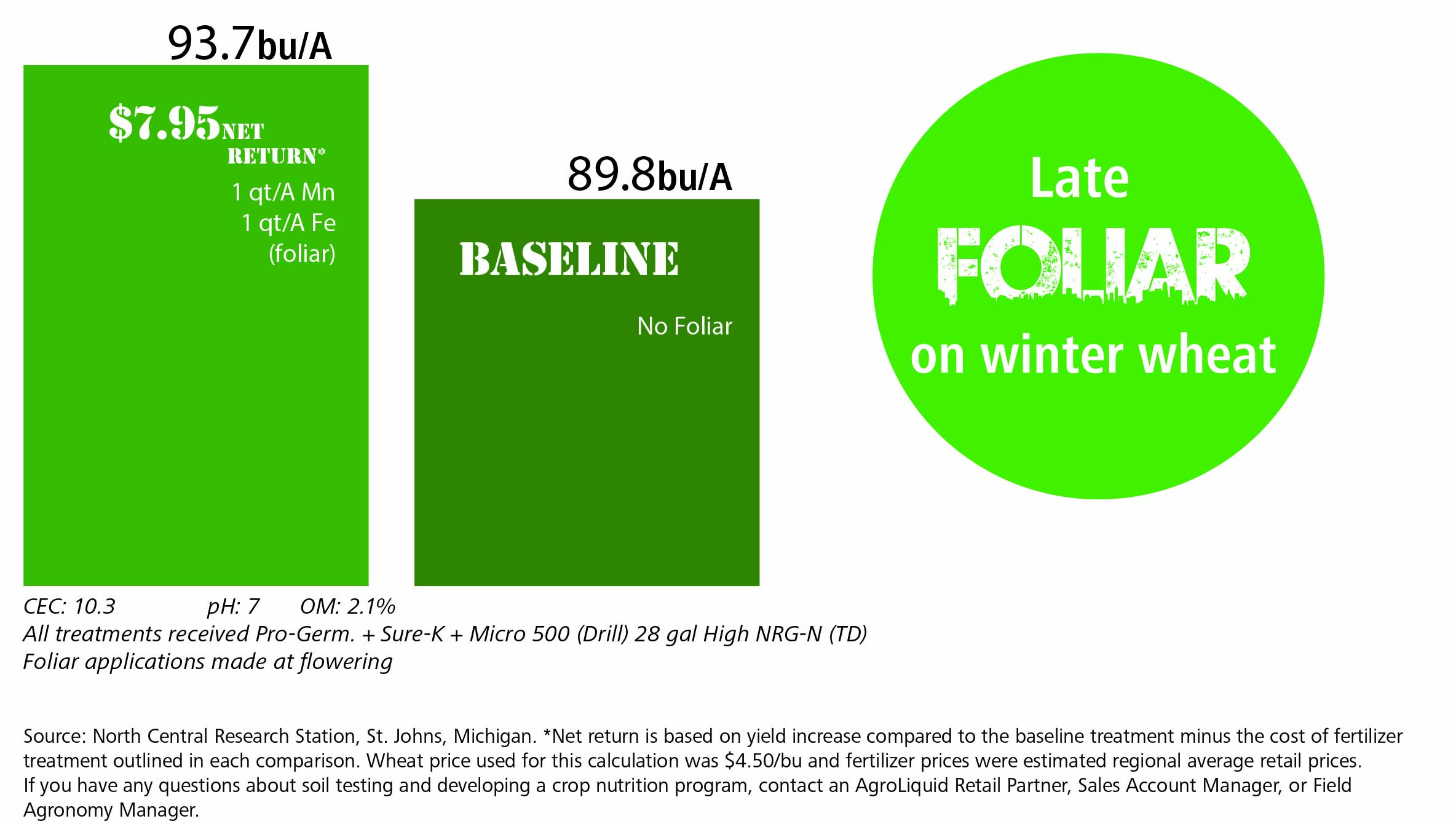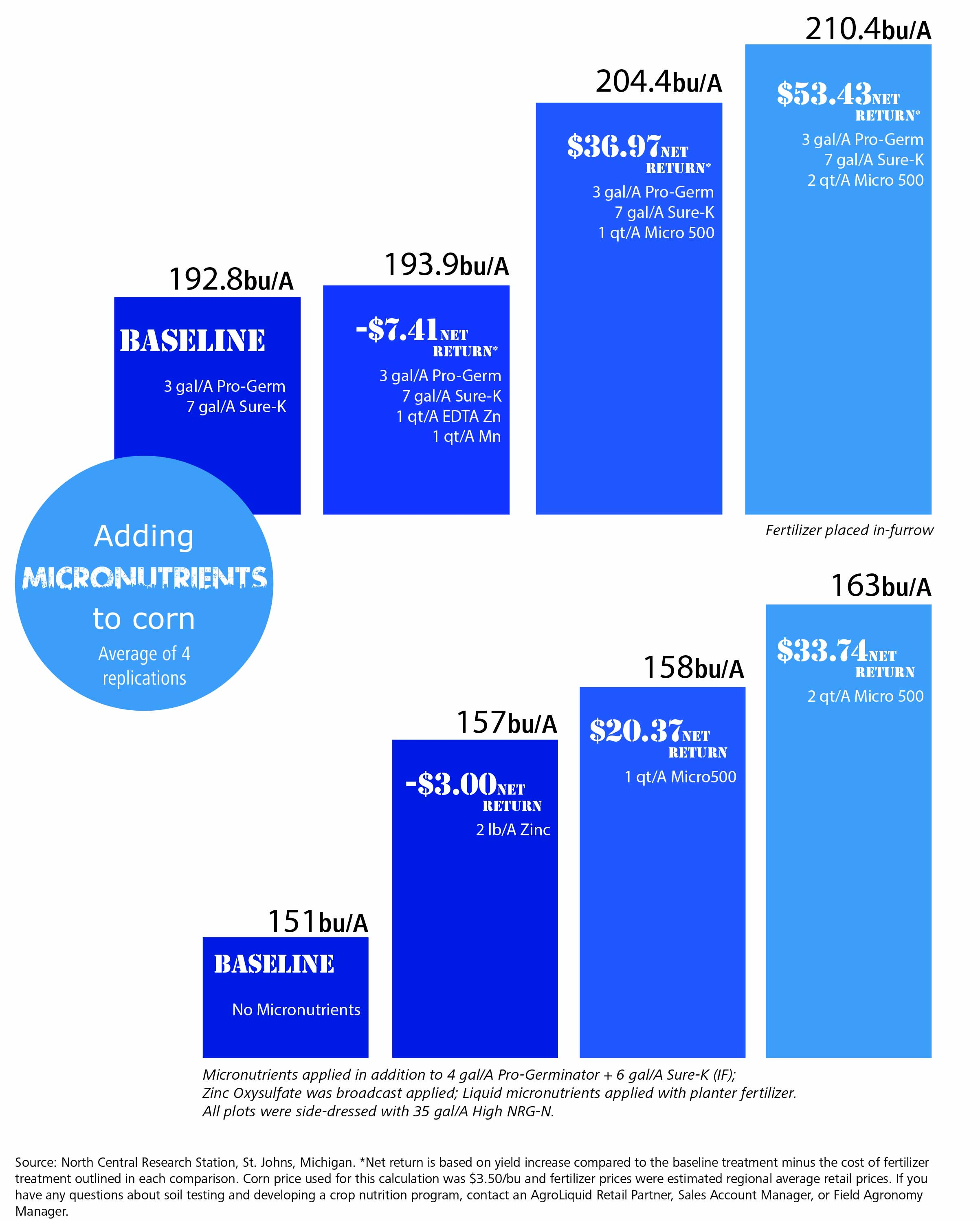Plants require 17 essential nutrients for maximum growth and production. Eight of these elements are micronutrients. Since plants require only small amounts of micronutrients, it can be more difficult to notice and solve micronutrients deficiencies. But what are micronutrient deficiencies in plants? And how can growers solve micronutrient deficiencies? We’ve updated this blog post in 2022 to give you even more information and help you solve micronutrient deficiencies effectively.
What Are Micronutrient Deficiencies in Plants and How Can Growers Solve Them?
Plants require 17 essential nutrients to grow. The first three are carbon (C), hydrogen (H), and oxygen (O), which plants absorb through water and air. The other nutrients mainly come from the soil, and these are the focus of fertilizer products. Three of these are primary nutrients or macro nutrients; nitrogen (N), phosphorus (P), and potassium (K). Another three are considered secondary nutrients; sulfur (S), Calcium (Ca), and Magnesium (Mg). The remaining eight nutrients are micronutrients; boron (B), chlorine (Cl), copper (Cu), iron (Fe), manganese (Mn), molybdenum (Mo), nickel (Ni), and zinc (Zn). Though plants require micronutrients in small amounts, it can also be easy to miss a micronutrient deficiency.
What Are Micronutrient Deficiencies?
Micronutrient deficiencies occur when there is not enough of a micronutrient in the soil. Or, in some cases, the micronutrients may be present in the soil, but they are bonded to other compounds in the soil, and the plants’ roots cannot break them down. Different micronutrient deficiencies have different effects on different plants, though many micronutrient deficiencies appear in similar ways. This makes it hard to know which micronutrients are missing. However, a soil test can show which micronutrients are missing, which we will discuss later in the post.
What Do Micronutrient Deficiencies in Plants Look Like?
Micronutrients help plants perform a variety of functions. Each crop grown has minimum requirements of certain micronutrients in specific proportion to each other. Zinc affects the terminal growth areas of the plant. High yields are impossible without zinc due to its importance with growth. Iron is required for the formation of chlorophyll. It activates respiration and is essential for food production. Boron is essential for development of new cells in the process of cell division and differentiation. Copper catalyzes several plant reactions and is essential to chlorophyll formation. Manganese serves as an activator for enzymes involved in plant growth processes. It is needed for phosphorus and magnesium uptake. Micronutrient deficiencies can make these processes harder, and the plants will struggle. Depending on the micronutrient deficiency, this might appear in the plants as curled, yellowed leaves, weak stems, slow growth, weak flower, bud or seed growth, and more.
How Can You Detect Micronutrient Deficiencies in Plants?
The first step in solving micronutrient deficiencies is to pinpoint which micronutrients are missing. Since many micronutrients deficiencies appear in similar ways, it can be hard to do this on-sight. The most reliable ways to see which micronutrients are deficient are to perform a soil test or a tissue test.
To take a soil test, you’ll extract soil in a zigzag pattern across the growing area, and send it to a testing center. A soil test can show the nutrient levels, pH, base saturations, organic matter, and cation-exchange capacity (CEC) in the soil. This can be extremely helpful in showing whether or not a micronutrient deficiency is responsible for slow plant growth, and which micronutrients are deficient.
The second test that can help growers solve micronutrient deficiencies in a tissue test. While a soil test will show you the nutrient profile of the soil, it won’t show whether or not your plants are actually getting the nutrients they need from the soil. A tissue test can help to answer this question. A tissue test is similar to a soil test; you’ll need to take samples from plants in a zigzag pattern across the growing area, and send these samples in for testing.
Wondering about a nutrient deficiency? Our agronomists can help
Learn more about soil and tissue sampling >
How Can You Solve Micronutrient Deficiencies?
Micronutrient deficiencies in soil are becoming increasingly common. Why is that?
- Increased yields due to various technologies means higher removal of micronutrients from the soil.
- Some micronutrients are no longer contained in high analysis fertilizers and fertilizer materials.
- Any type of land preparation which results in the removal of several inches of topsoil can result in a deficiency of certain micronutrients on the cut areas.
- High phosphorus levels can induce micronutrient deficiencies.
Once you’ve identified what micronutrients are missing using a soil or tissue test, you can solve them. Adding micronutrient fertilizer is one of the most reliable ways to solve micronutrients deficiencies in crops. The five micronutrients in Micro 500 are formulated together using AgroLiquid’s Nutriq Technology so that they perform better than applying comparable rates of individual micronutrients. The formulation technology used in Micro 500 makes it easy for those nutrients to enter through the roots or leaves of the plant, making it an ideal micronutrient product for soil or foliar applications.
Why Micro 500?
The micronutrients in Micro 500 are synergistic. Growers get better uptake and response from a micronutrient in Micro 500 than if they apply an equal volume of a nutrient alone. In addition, having this combination available is helpful in pockets of a field where a grower might be unaware that a particular nutrient is lacking.
Does Micro 500 Solve Micronutrient Deficiencies in Plants?
We’ve tested Micro 500 on a variety of crops. The charts below shows research from the North Central Research Station.
Trials show that AgroLiquid micronutrients perform better than dry micros because applicators can place them in a root zone band (in furrow or near the seed). Micro 500 also offer better results compared with other conventional EDTA-chelated micronutrients.
The chart below shows research from the North Central Research Station. They did a comparison of micronutrients and the additional one and two quarts of Micro 500 gave an additional net return and yielded higher than the baseline and no micronutrients.
Micronutrient deficiencies in plants can be difficult to contend with, and they’re becoming increasingly common. However, growers can identify these micronutrient deficiencies with a bit of science. With help from a specially formulated micronutrient fertilizer, growers can solve micronutrient deficiencies too.




